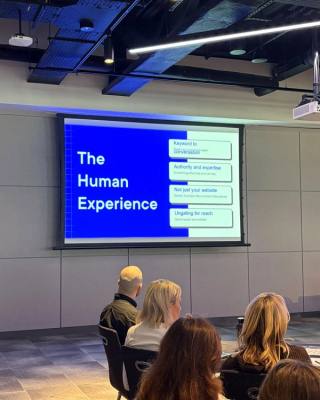What is bounce rate?
In simple terms, your bounce rate is the percentage of site visitors who leave after viewing just one page - ie the one they entered on. Contrary to popular opinion, there is no time limit involved, or at least if we’re using the calculation used by Google Analytics there isn’t.
Nevertheless, it probably shouldn’t need to be explained that a high bounce rate is not a good thing: in a sense every single other metric feeds off this. If you can reduce your bounce rate then every other metric gets a boost, simply because your playing with greater traffic flow to the rest of the site.
What influences bounce rate?
Before going further it might be worth remembering that whilst a high bounce rate can be a sign that something is wrong with your site (including landing pages), it may also result from sending the wrong traffic to the site in the first place.
To give a slightly extreme example, if you sell speciality teas and spend a lot of money on the Google search term “coffee”, you are likely to end up with a lot of disappointed visitors and a high bounce rate. Bad news and wasted money.
Yes, that example is deliberately absurd, but at the same time it should be understood that most organisations exhibit more of this behaviour than they would like to admit. We all want traffic, and if we can deliver more by positioning the business as broadly as possible then so be it. So before diving in and changing your site and landing pages, take a very close look at your traffic, where is comes from, and whether certain campaigns are delivering particularly high bounce rates.
Ask yourself whether these campaigns are truly reflective of your actual business, and if they are not consider dialling them down before proceeding to take a look at the site itself.
5 ways to reduce your bounce rate
If you’re pretty comfortable with your marketing and advertising, then you might have to reach the painful conclusion that there’s something wrong with your site. The good news, however, is that you don’t necessarily need to rebuild from scratch. Here’s five ways to lower your bounce rate without going back to the drawing board:
1. Optimise content
If your content is unclear, uninteresting, or poorly formatted, you are going to struggle with bounce rates. Establish what will pull your site visitors in. What do they care about? How can you help them? Express the answers to these questions as clearly as possible.
Focus on compelling content with a strong focus on solving the typical challenges your visitors are looking to address. Where possible link this content with known sources. Format as clearly as possible and don’t be tempted to cram too much information into a small space. Lastly, use heatmap analysis to establish how users are interacting with content (and amend accordingly).
2. Focus on clear calls to action
Hopefully your content has kept site visitors on the page for more than a few seconds. They’re interested. What next? Well, wherever possible make that decision as easy as possible. Use clear calls to action and do so throughout page content.
Make those calls to action as compelling as possible. If there is a specific reason a site visitor should view a demo or sign up for a free trial today rather than tomorrow, then use it. Don’t overload the user with choice, but at the same time allow natural curiosity to take its course. Ensure that if a particular piece of content sparks an interest the viewer can choose to find out more without resorting to the top navigation.
3. Streamline user experience
Most people are understandably intolerant of pop-ups, interstitials, splash screens and so on. If in doubt: leave them out. All other things being equal, if something is important enough to deliver via a pop-up it should probably be on the page itself.
Most users have learned through long and bitter experience that most pop-ups are simply getting in the way of what they want to do - so don’t expect them to pay too much attention to whatever it is you are trying to say in a pop-up: chances are they will just hit the back button instead.
Test pages to ensure users navigate through them effectively. Establish to what extent users are (or are not) scrolling and either re-structure content or provide visual cues to increase the numbers who make it through the page. At all stages, focus on ease-of-use and intuitive interaction.
4. Build out landing pages
Continuity between ad creative and the page on your site that users are directed to is important. If you are sending users who clicked on a whole host of different ads to the same generic homepage, you’ll want to build out a suite of landing pages.
By doing so you can tailor content, creative and calls to action that speak directly to the concerns and interests of visitors. So in the case of our imaginary tea shop, users clicking an ad for earl grey would arrive at a landing page that covers that subject specifically - without distractions.
As a result visitors will be getting precisely what they expect and you should see bounce rates reduce as a result. Remember to test and optimise these pages. And keep an eye on the big picture: landing pages are beneficial, but without a certain amount of traffic flow more of them may be wasted effort.
5. Reduce load time
Keep people waiting and they will look elsewhere. This effect can be exaggerated, but there’s absolutely no question it exists. At Kooba we work extremely hard with our clients to ensure that load times are as fast as possible. You should too.
The broader subject is too extensive to cover here, but a few common fixes for improving load times include:
Optimise images, and be sensible about large files, particularly in relation to video
Custom code your site and keep speed top-of-mind during that process
Reduce calls to third party services. Some are inevitable, but evaluate what you really need on a regular basis
Make sure that something is in place as soon as possible - that the site loads progressively
A final note: don’t forget that some bounce rate - even quite a lot of bounce rate - is inevitable. Check your industry benchmarks and view reduction of bounce rate as a process rather than a one off job. Work your way down through the most common arrival pages and watch the rest of your metrics soar!








